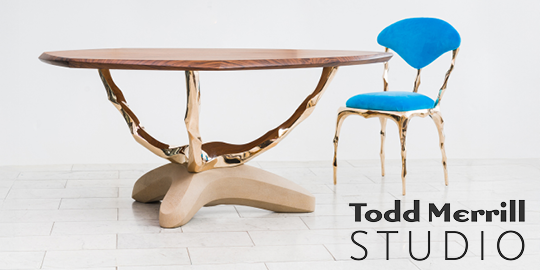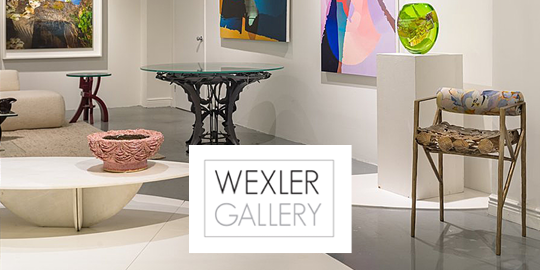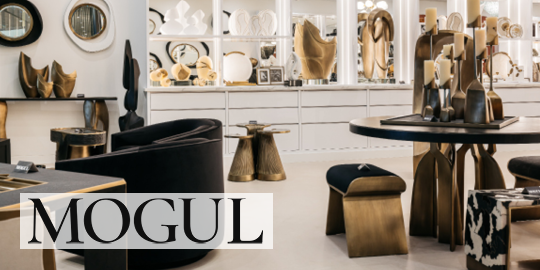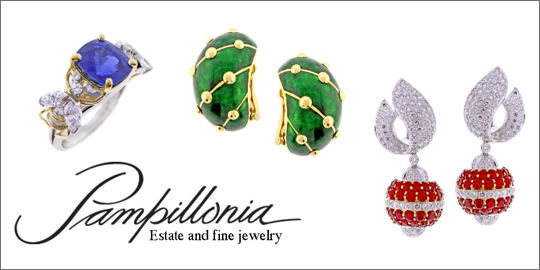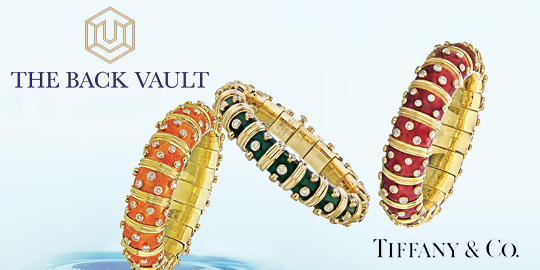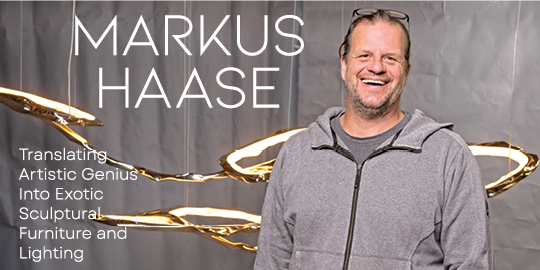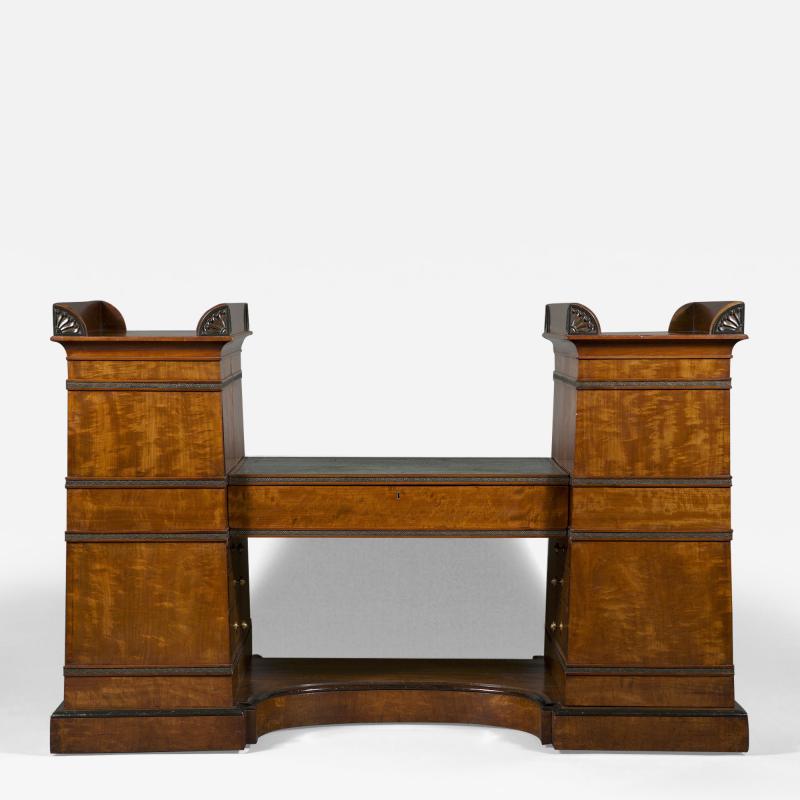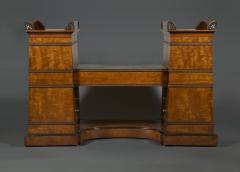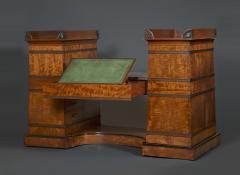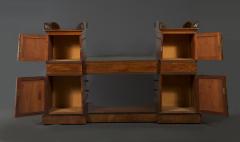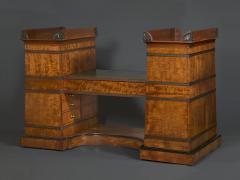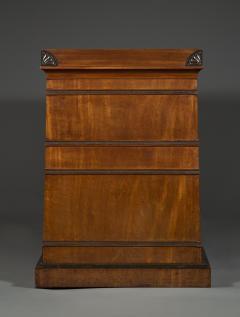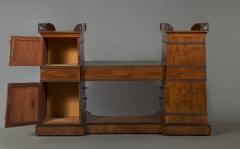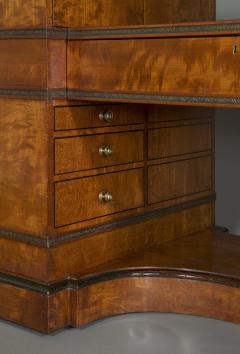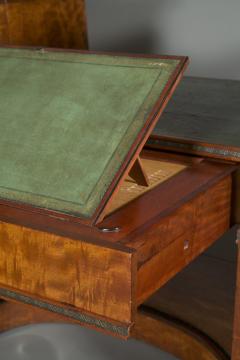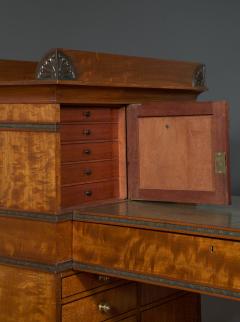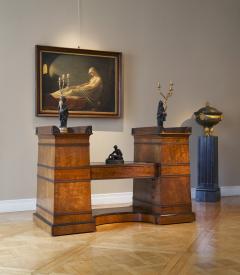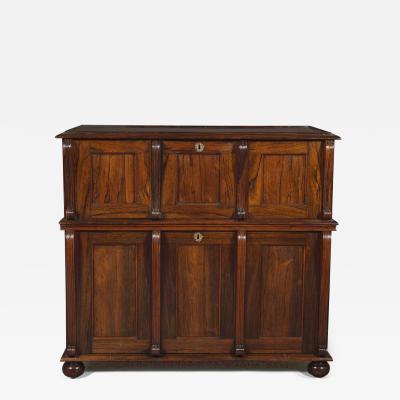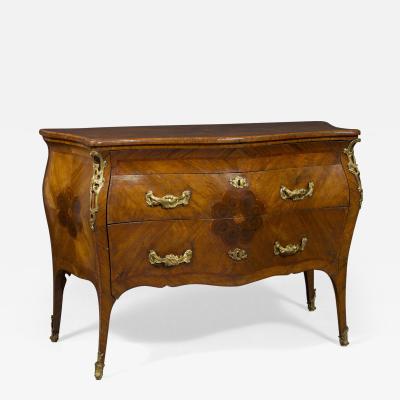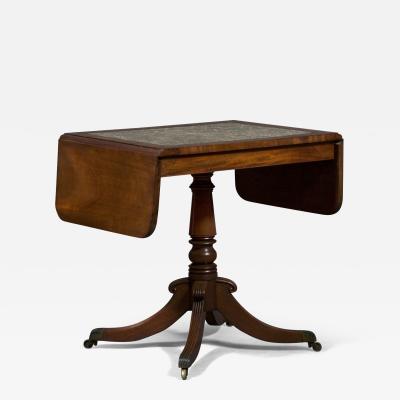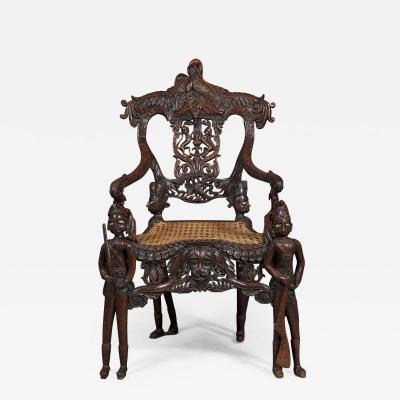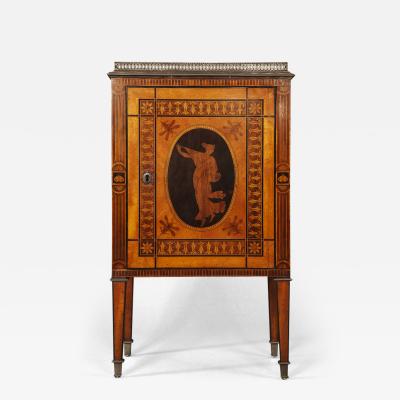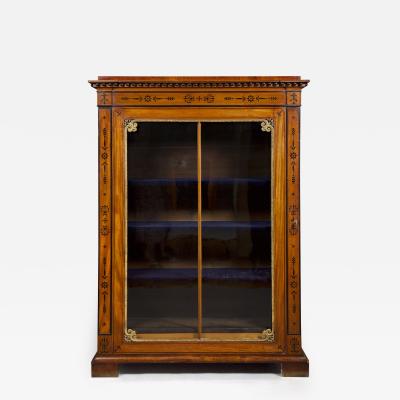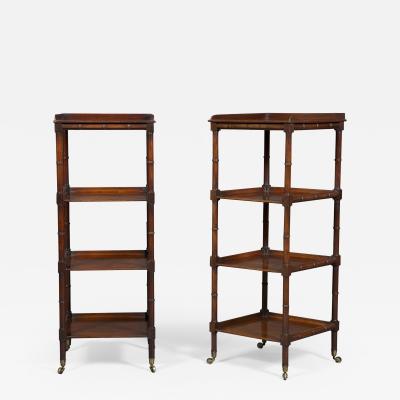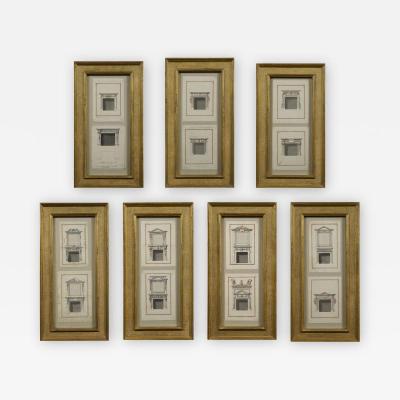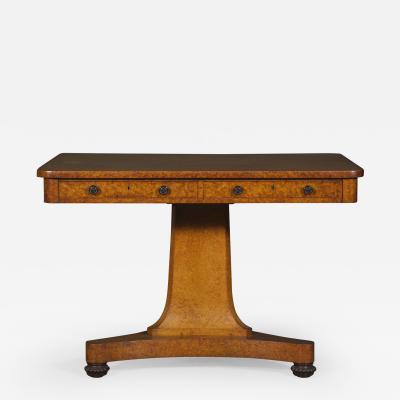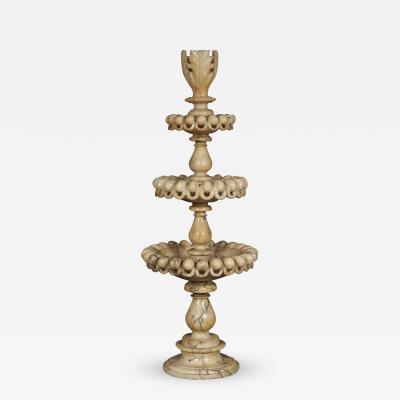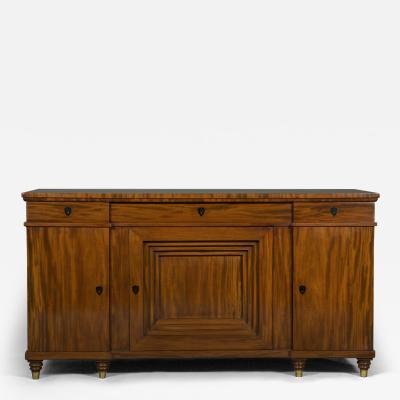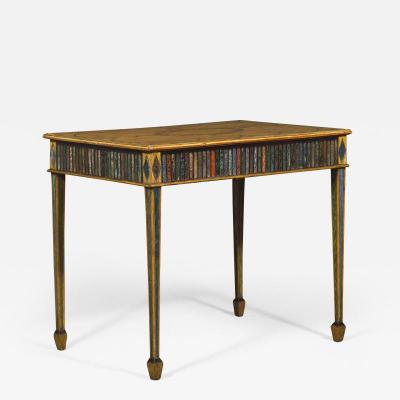Regency ‘flash’ mahogany and ebonized desk of double pylon architectural form
-
Description
An important regency ‘flash’ mahogany and ebonized desk of double pylon architectural form
English. Early Nineteenth Century.
Measurements
Height: 49" (124.4 cm); Width at bottom: 75 1/4" (191 cm); Depth at bottom: 35 3/4" (90.8 cm); Kneehole height: 23 3/8" (59.3 cm); Kneehole width at bottom: 36 1/2" (92.7 cm).
Research
Of highly figured mahogany with ebonized detailing. Gilt brass, embossed wood. The plain incurved central plinth supports a pair of pylon form pedestals topped by anthemion carved acroteria. Each pedestal fitted with three drawers to the inside kneehole. Five further drawers are concealed behind a hinged panel to each side of the writing surface. The pylonic cabinets are spanned by a central section containing a single drawer fitted with a ratcheted easel with inset green leather. The top is fully covered by faded original green tooled leather. The conforming back is fitted with a single door to each pedestal. The whole with continuous embossed wood floral ebonized bands. Surfaces of some panels rebacked to resolve and prevent fissures in the veneer.
Provenance:
Henry Spencer & sons
H. Blairman & Sons
Published:
M. Jourdain and F. Rose. English Furniture: The Georgian Period 1750-1830. London, 1953, figs. 20 (detail)
C. Musgrave. Regency Furniture: 1800 to 1830. London 1961, pl. 19
The present desk is an acknowledged masterpiece of early Regency furniture, published as it is in two seminal works on English furniture by specialist leading scholars Clifford Musgrave’s Regency Furniture: 1800 to 1830 (1961) as well as in Margaret Jourdain’s English Furniture: The Georgian Period 1750-1830 (1953).
The desk is undoubtedly one of the most sophisticated, pared-down examples of Egyptianizing forms in the Regency, and may come under the heading of furniture as “miniaturized architecture.”1 Its uncompromising austerity of design is elevated only by horizontal raised narrow bands, most unusually rendered in dark green embossed wood, which gives an appearance of patinated bronze, while the cavetto capping of each pylonic end is topped by galleries with anthemion carved acroterae corners, also appearing to represent dark bronze mounts. The striking double pylonic form of the desk goes beyond decorative effect in that it is an overt evocation of the ancient Egyptian civilization and derives from the massive tapered pillars initially erected at the entrance of the temples of the Ramesside period of the New Kingdom (1550-1070 BC).
The Egyptian style was promoted by publications such as Baron Vivant-Denon’s Voyages dans la Basse et la Haute Egypte, 1802. The grammar of ornament was applied not only as surface decoration, but informed architecture and furniture designs as well. Important Regency interior schemes in this taste included the Egyptian Hall, Picadilly, London, designed by Peter F. Robinson for William Bullock; the Egyptian Dining Room at Goodwood House, created by James Wyatt between 1802 and 1806; and the Egyptian Room at Cairness House designed by James Playfair circa 1797— notably the chimneypiece in this room is comprised of two pylons supporting the mantleshelf.
It is worth noting two other late eighteenth or early nineteenth century desks that exist whereby a writing surface spans two taller pedestal cabinet ends. Most related to the present desk is plate II from Thomas Hope’s Household Furniture and Interior Decoration (London, 1807). Furthermore, there is an earlier precedent on the form by Thomas Sheraton, in his so-called “sisters cylinder bookcase” of 1803, which, interestingly, has inverted pylon pedestals.
Full research report available on request. -
More Information
Origin: England Period: 19th Century Creation Date: Early 19th Century Styles / Movements: Regency, Traditional Dealer Reference #: 11569 Incollect Reference #: 780688 -
Dimensions
W. 75.25 in; H. 49 in; D. 35.75 in; W. 191.14 cm; H. 124.46 cm; D. 90.81 cm;
Message from Seller:
Carlton Hobbs, LLC specializes in the acquisition, conservation, and research of 17th to 19th century British and Continental furniture and works of art, with a focus on pieces of exceptional merit, including royal and aristocratic provenance. For inquiries, contact 212.423.9000 or email stefanie@carltonhobbs.com.





